The Order of Monks: How Seniority Shapes the Buddhist Monastic Life
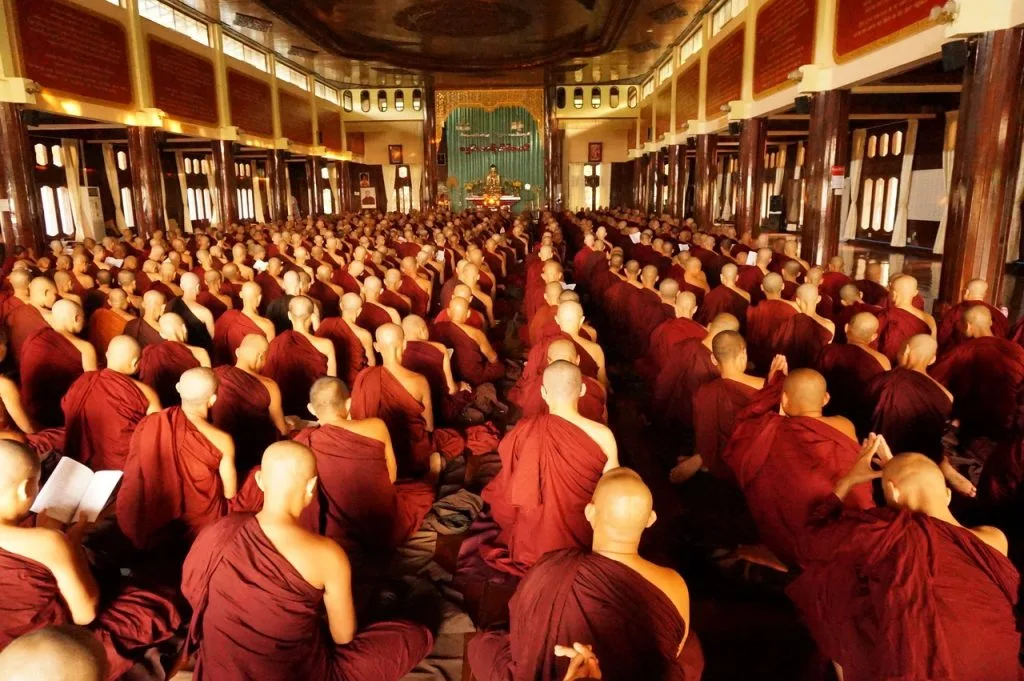
monks seated for the patimokkha recitation in Pa-Auk Mawlamyine
Introduction
One of the things that you may notice when you visit a Buddhist monastery is that the monks sit, eat, walk, and pay respect to each other in a certain order. This order is based on the principle of seniority, which is determined by the date of ordination, not by age, education, or social status. Whoever is ordained earlier is considered senior, and whoever is ordained later is considered junior.
Why do the monastics follow this order and what are the benefits and challenges? How does it affect their roles and responsibilities within the community? In this article, I will share some of my observations and experiences on seniority and how it fosters harmony, respect, and learning among the monastics.
Latin 101: “Ordo” and “Ordinatio”
A synonym for a religious monastics is “The Order”. But did you know that “ordination” and “order” share a common origin in the Latin word “ordinatio,” which means “arrangement” or “ordering.” There is also another Latin word called “ordo” which refers to rank and order. This is why we use “ordination” to refer to the act of being formally admitted to a religious order, and why we use “order” to refer to the organization or group of people who belong to that religious order. So when we talk about “The Order” it really means that and seniority takes on a literal meaning when speaking about Theravāda monastics, and perhaps other religious orders too.
Vassa or Rainy Seasons
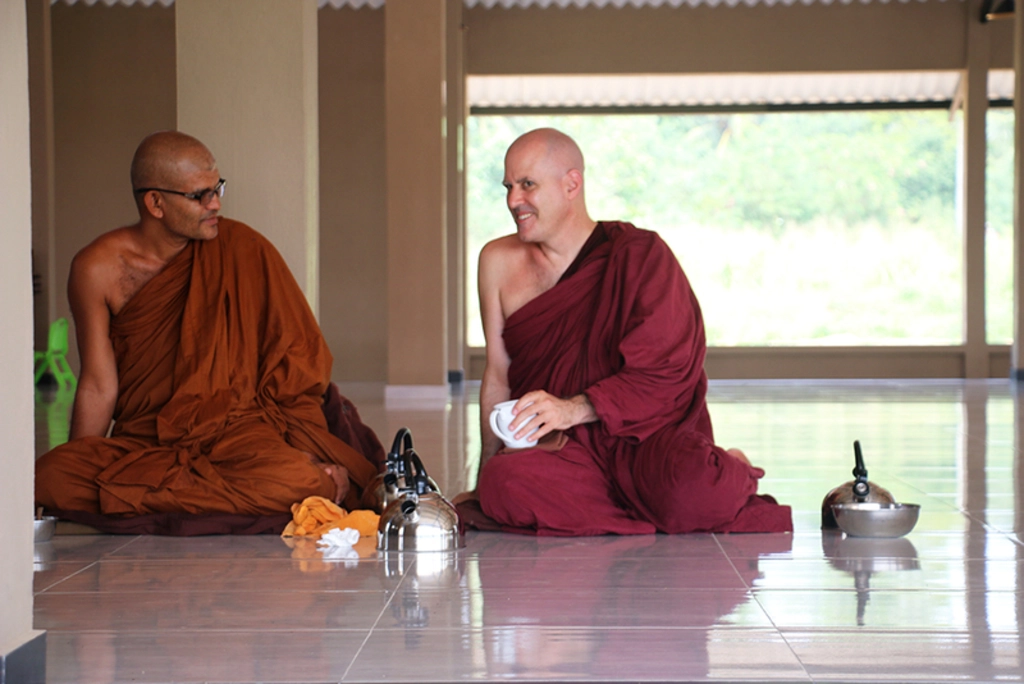
In this picture, Ven Devananda is to my right even though we were ordained the same day.
While seniority is not only measured by the day, month and year. It is also measured by the time of the day in case monks are ordained on the same day. My senior friend Venerable Devananda is roughly 3 hours senior to me. However, we normally break down seniority into rainy seasons (vassa). The Rainy Seasons usually start in July and end in October but they sometimes change because we use a lunar calendar. When you finish a rainy season, your monk age goes up a number. At the time of writing this article (March 2023), I’m 16 vassa.
Addressing Senior Monks
Before the Buddha attained Parinibbāna, he made a ruling that junior monks should call senior monks “bhante” and senior monks should address the junior monks as “āvuso.” Generally speaking, “bhante” means venerable sir or teacher, while “āvuso” means friend or brother. A long time ago, of my friends who is very senior used to address me as “friend” in English. I thought that was very nice.
Theratarena, ānanda, bhikkhunā navakataro bhikkhu nāmena vā gottena vā āvusovādena vā samudācaritabbo.
A more senior bhikkhu ought to address a more junior bhikkhu by name or clan, or by saying ‘reverend’.Navakatarena bhikkhunā therataro bhikkhu ‘bhante’ti vā ‘āyasmā’ti vā samudācaritabbo.
A more junior bhikkhu ought to address a more senior bhikkhu using ‘sir’ or ‘venerable’.Mahāparinibbānasutta
Sitting and Eating

Monks seated in order to eat food at IIT
When the monastics gather for a meeting, a ceremony, or a meal, they sit according to their seniority. The most senior monastic sits at the head of the line, and the most junior monastic sits at the end of the line. It is customary to keep the senior monastic to your right whenever possible. This order is maintained regardless of the number of monastics present or the size of the space. The purpose of this arrangement is to avoid confusion and conflict over who should sit where, and to show respect to the elders.
The same order is followed when the monastics receive food. The most senior monastic gets the food first, and the most junior monastic gets the food last. This ensures that everyone gets a fair share of the food, and that no one is left out or discriminated against. The senior monastics also have the option to share their food with the junior monastics, or to give up their food for the sake of others. One senior monk at Pa-Auk intentionally takes his food last as a daily practice and as a way of donation to the junior monks. This cultivates generosity and compassion among the monastics.
Paying Respect
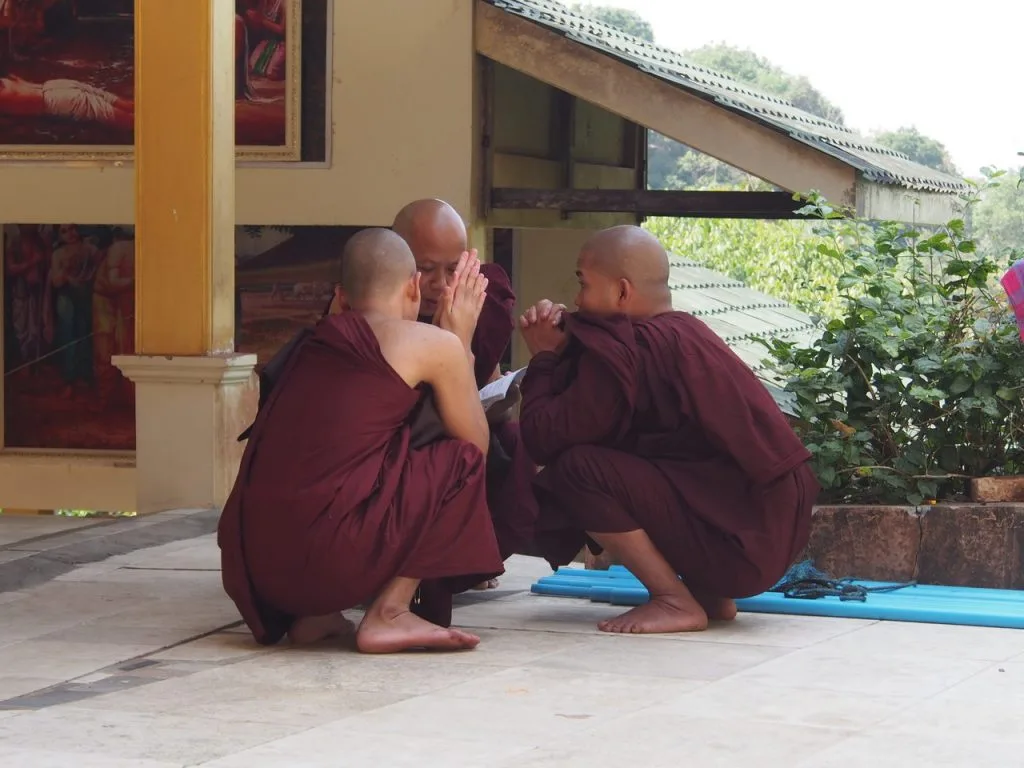
Pa Auk Monastery in 2014
Another way that seniority is expressed is through the gesture of paying respect. Paying respect is a way of acknowledging the presence and the wisdom of another monastic, and of expressing gratitude and humility. It is done by bowing with the palms together at the chest level, or by prostrating with the forehead touching the ground.
The junior monastics pay respect to the senior monastics, but not vice versa. This is because the senior monastics are seen as the teachers and the guides of the junior monastics, and as the ones who have more experience and knowledge in the practice. The junior monastics also pay respect to the senior monastics when they receive teachings, advice, or instructions from them.
Roles and Responsibilities
Seniority also determines the roles and responsibilities that the monastics take on within the community. Often, the senior monastics who have over ten years of monastic experience take on teacher roles to other monastics. They teach the Dhamma, the monastic discipline, and the meditation techniques to the junior monastics. They also answer their questions, correct their mistakes, and inspire them to practice diligently. Most importantly , they become “good quality supportive friends” (kalyāṇamitta) to the other monastics both senior and junior. A monk who has over 10 years is called a Thera which means elder while a monk with over 20 years is called a Mahāthera (great elder). You might recall that Theravāda means “The Teaching Of the Elders” However, in this case, Theravāda is referring to the teachings of the Buddha, his disciples and also the ancient teachers who helped shape the ancient texts.
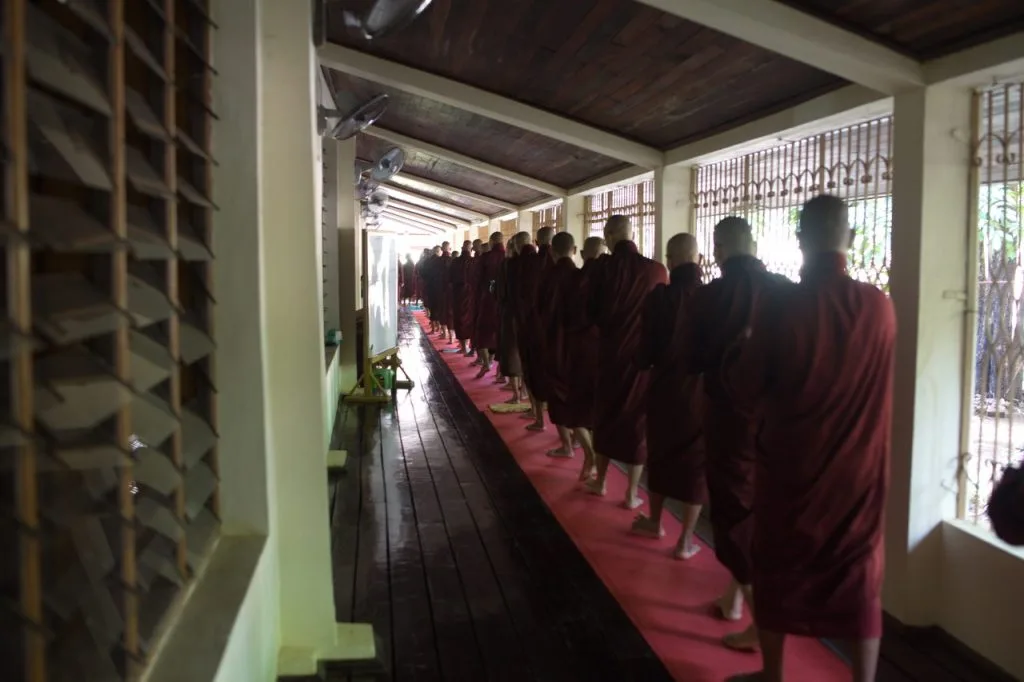
Pa Auk Monastery in 2014
The senior monastics also take on leadership roles, such as leading the groups, the ceremonies, and the rituals of the community. They are the ones who make the decisions and the rules for the benefit of all. They also take care of the facilities, the schedules, and the events of the monastery, with the help of the lay supporters.
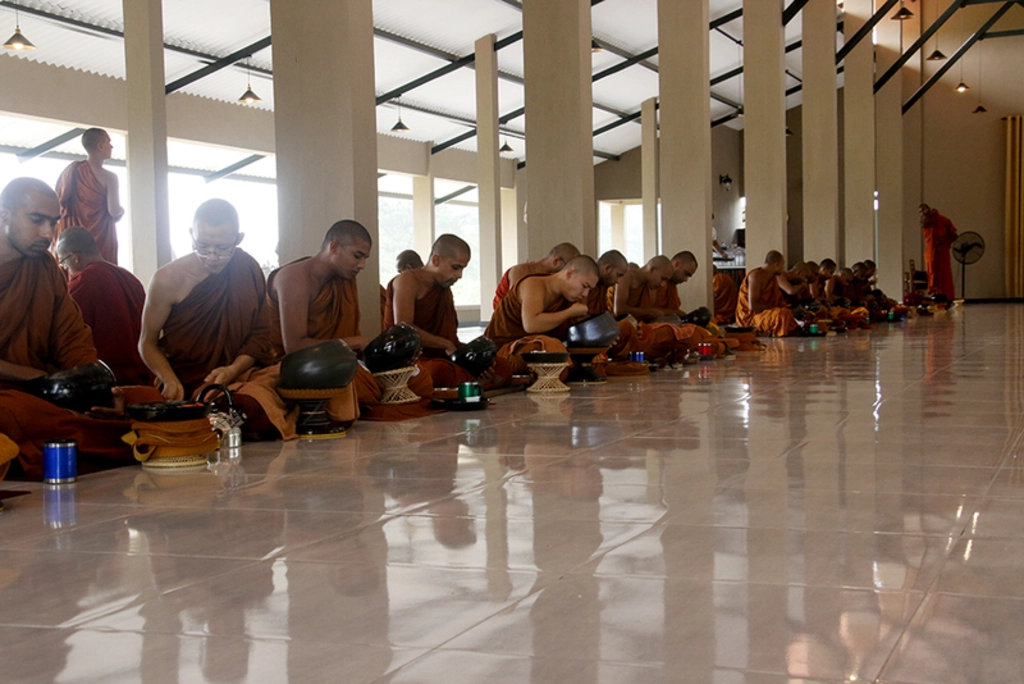
Seating for eating are by ordination dates at IIT
The junior monastics, especially the novice monks, on the other hand, take on supportive roles, such as cleaning, gardening, and serving the senior monastics. They also follow the instructions and the rules of the senior monastics, and learn from their example.
While there is a big contrast between novice monks and Theras and novices, each monk must show reverence to anyone who is senior to him, even one ordained at a different time on the same day. In this way, everyone is eventually senior to someone else, except the last ordained monk on that day. When I first ordained in 2001, just before the pātimokkha recitation. Venerable Pa-Auk Sayadawgyi said to me, “You may sit at the very end of the line, you are the most junior monk.”
Being junior is also a way for humility to arise. When I re-ordained in Sri Lanka, my seniority was reset back to zero in 2007. I had to bow down to monks who previously bowed down to me and who were very junior even though I used to have five or six years before them. I had to bow down to some whom I just didn’t like. By doing such behavior, one becomes junior in many ways. It also opened the door for others to teach me and for me to learn from them.
When Flexibility Occurs
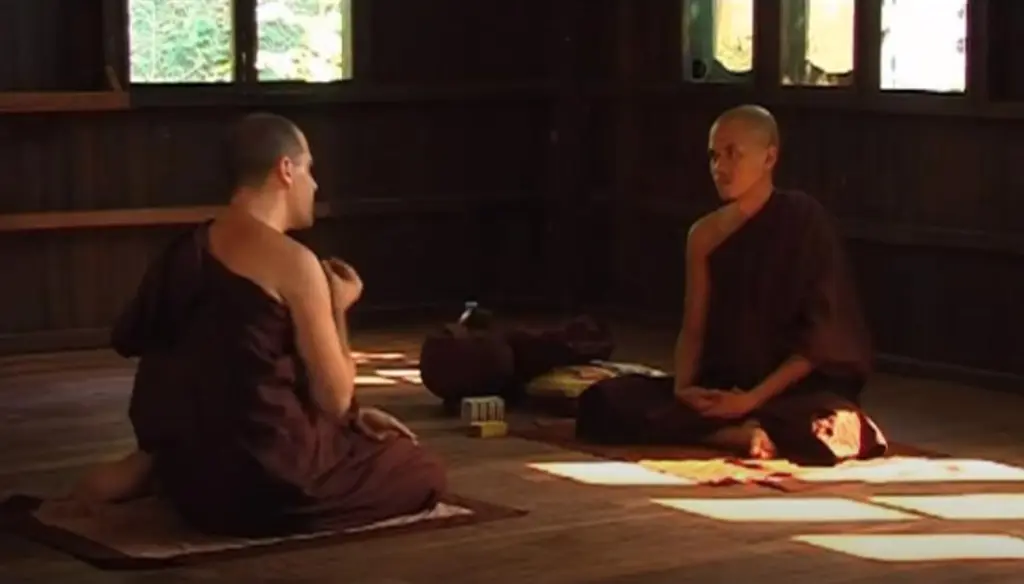
Venerable Revata teaching meditation while he was still a very junior monk (but senior to me)
While seniority is rigid in terms of who pays respect to who, who to line up and when to get food, it is not a rigid or absolute rule in other areas, and it does not imply superiority or inferiority. It merely means one is older and ordained early. Other areas are flexible and relative guidelines, and it depends on the context and the situation. Sometimes, the junior monastics may have more skills or knowledge than the senior monastics, and they may be able to teach or lead them in certain areas. Sometimes, the senior monastics may make mistakes or act unskillfully, and they may need to be corrected or advised by the junior monastics. Sometimes, the monastics may put aside the order of seniority, and treat each other as equals or friends.
Even though respect runs deep for senior monks. That does not mean they are invincible to useful and constructive criticism. Venerable Sāriputta was one of the most eminent disciples of the Buddha. He was renowned for his wisdom, his compassion, and also his humility.
Once, he was walking with a large group of monks to visit the Buddha. Among them was a seven year old novice, who had just joined the order. The novice noticed that a corner of Sāriputta’s under-robe was trailing on the ground, which was against the monastic discipline. He pointed it out to Sāriputta, saying, “Venerable Sir, your robe is not properly worn.”
Venerable Sāriputta did not feel offended or annoyed by the remark. He did not think, “Who is this young novice to tell me how to wear my robe? I am a senior and a chief disciple of the Buddha. He should respect me and keep quiet.” Instead, he felt grateful and happy that the novice had corrected him. He stepped aside at once and arranged his robe in the proper way. After that, he stood before the young novice and with joined palms, said, “Now it is correct, teacher!”
The most important thing is not the order of seniority, but the quality of the mind. The monastics should cultivate a mind that is humble, respectful, generous, compassionate, and wise, and that is free from pride, arrogance, envy, jealousy, and ignorance. This is the true spirit of seniority, and harmony plays a central part in gluing together the monastic life.
The Story of the Four Harmonious Friends
There is a story in the mūla vinaya texts that illustrates the importance of seniority and respect among the monastics. The story goes like this:
Image not found.
The Buddha then addressed the monks:
“Once upon a time, monks, there was a great banyan tree on the slope of the Himalayas. Three friends lived near it: a partridge, a monkey, and an elephant. They were disrespectful, undeferential, and rude toward one another. They thought, ‘If only we knew which one of us was the oldest. We would honor, respect, and esteem him, and we would wait for his instructions.’
The partridge and the monkey then asked the elephant, ‘What’s your first memory?’
‘When I was a young, I stepped over this banyan tree, keeping it between my thighs, and the top shoots touched my belly. That’s my first memory.’
The partridge and the elephant asked the monkey, ‘What’s your first memory?’
‘When I was a young, I sat on the ground and ate the top shoots of the banyan tree. That’s my first memory.’
The monkey and the elephant asked the partridge, ‘What’s your first memory?’
‘In such and such a spot there was a great banyan tree. I ate one of its fruits and defecated here. This banyan tree has grown from that. Well then, I must be the oldest one.’
The monkey and the elephant said to the partridge, ‘You’re the oldest of us. We will honor, respect, and esteem you, and we’ll wait for your instructions.’”
cv 311
Summary Poem
In ancient Buddhist monasteries of great faith,
The way of the order follows until today.
It’s not age, race or education they revere,
But seniority based on the ordination year.From sitting to eating, respect they pay,
To the most senior monk in every way.
The junior ones bow in a humble stance,
To honor the wisdom as his years advance.The senior monks take on teaching and leadership roles,
And leading the alms line while carrying their bowls.
The junior ones follow and learn from them,
A harmonious community without discontent.Humility arises in being a junior once again,
Resetting seniority, to the beginning they send.
The teapot becomes empty for teachings to learn,
Learning from one another, in a mutual return.The order of Theravāda instills the young in faith,
Keeping the Elders’ teachings and practice safe.
In harmony and respect, they live each day,
With seniority and order guiding the way.Summary poem
Conclusion
Seniority is a key aspect of the Buddhist monastic life, and it has many benefits for the individual and the community. It helps to create a clear and orderly structure, to foster respect and gratitude, to facilitate learning and teaching, and to promote harmony and peace. Because senior monks are rare, it also helps for reflecting the Buddhist teachings on impermanence, and what a rare chance we all have to practice for the realization of enlightenment.
Click below to search subjects